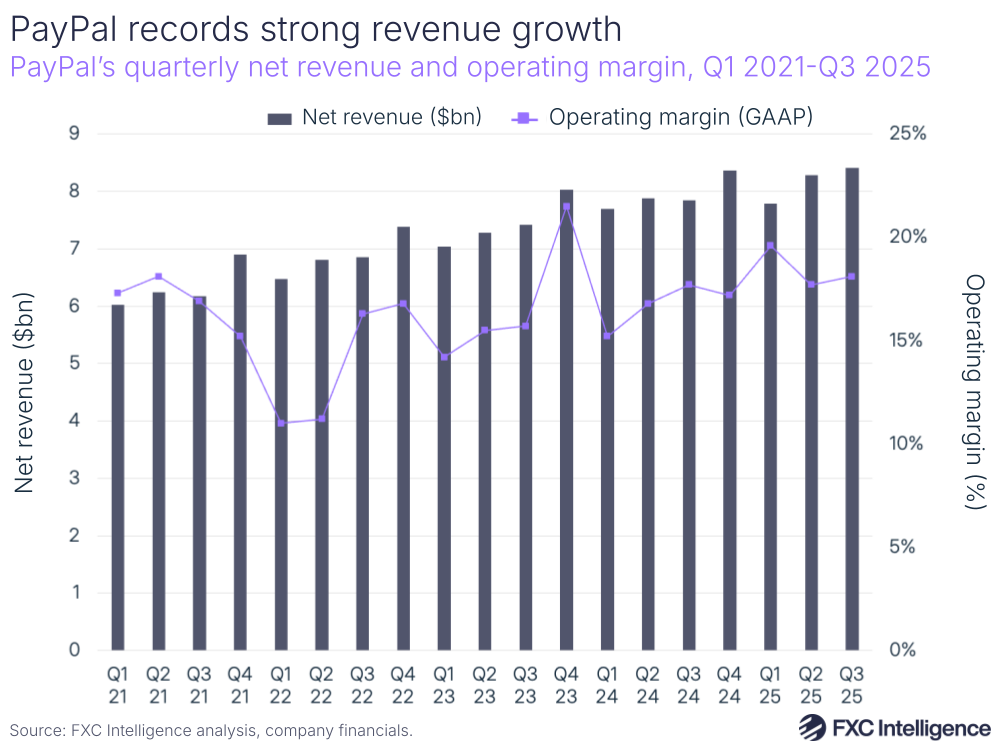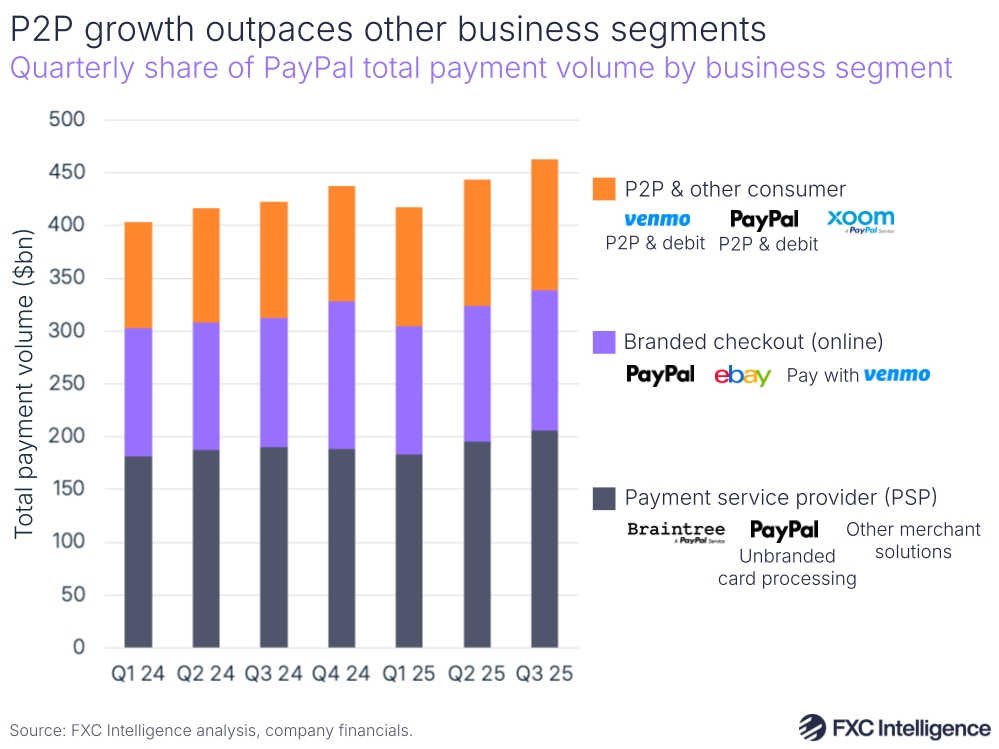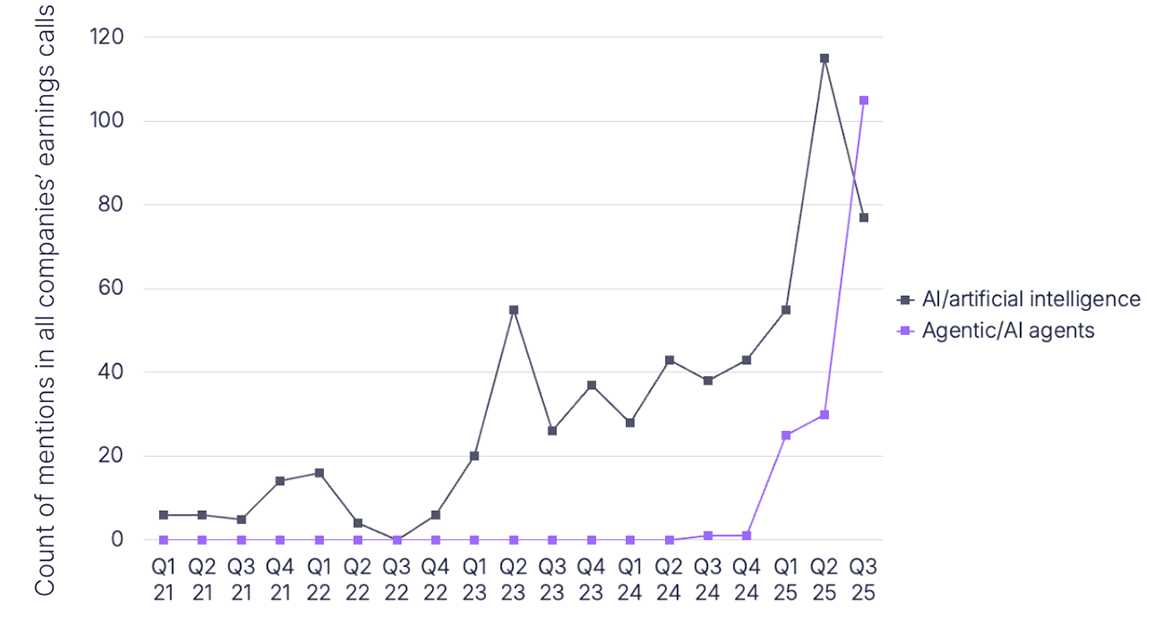PayPal has announced its Q3 2025 results, seeing a 7% YoY increase in net revenue to $8.4bn, as the company quickly advances its AI strategies.

In PayPal’s Q2 earnings call in July earlier this year, CEO Alex Chriss discussed how the company expected AI to drive significant change in how consumers shop across the globe. During the latest call, he reiterated this, explaining his belief that while agentic commerce will take time, the company does expect consumer behaviour to shift – with PayPal now “building for that future”.
Domestic payment volumes outperform remittances
PayPal’s total payment volume (TPV) grew 8% YoY to $458.1bn, while the number of payment transactions sat slightly below the numbers seen in Q3 2024, falling 5% to 6.3 billion. Continuing a trend seen in Q2, PayPal’s international TPV grew more quickly than its US TPV, at 10% compared to 8% for the US.
Meanwhile, cross-border TPV, which accounts for transactions where the merchant is located in a different market to the buyer, grew 8% YoY to $54bn – representing a 12% share of total TPV.
PayPal’s P2P TPV, which covers P2P for PayPal, Venmo and remittances brand Xoom, saw 8% YoY growth to $110.7bn. Venmo, PayPal’s US-based domestic mobile payment service, once again emerged as the biggest driver of this growth; seeing its TPV increase 14% YoY. However, this growth suggests that P2P excluding Venmo saw a 7% decline YoY in TPV share, indicating that cross-border volumes are growing at a much slower rate than domestic flows.
The company also revealed that it is ramping up efforts to roll out PayPal World, its international digital wallet platform that interconnects digital wallets to ease cross-border payments online. During the earnings call, Chriss said that this platform is officially in its pilot stage, with its first test transactions taking place this week, while explaining that the offering should help strengthen PayPal’s profitability in the future.

PayPal tightens focus on AI
PayPal’s AI ambition became increasingly clear in the days leading up to PayPal’s Q3 earnings call, as the money transfer giant unveiled plans to integrate its wallet with Mastercard’s agentic payments platform Agent Pay, enabling AI agents to complete transactions on behalf of PayPal users. Soon after, PayPal also announced it had signed a deal with OpenAI to embed its digital wallet into ChatGPT, enabling users to directly pay for items through the AI tool. It also unveiled Agentic Commerce Services, enabling merchants to integrate with PayPal to orchestrate their services to a wide range of large language models (LLMs).
CEO Chriss explained that he believes PayPal is especially well-positioned in the market, as it can offer LLMs access to “tens of millions of merchants”, alongside “identity, authentication, protection and payment processing on a global scale”. As a result, he said PayPal is “connecting the ecosystem together”, despite the fact that it could take time before agentic AI makes up a significant portion of overall purchasing volumes. It is yet to be seen whether this aggressive focus on AI will actually translate into increased profitability in the short-term, although it is clear that PayPal is betting on AI becoming a key part of its long-term strategy.


